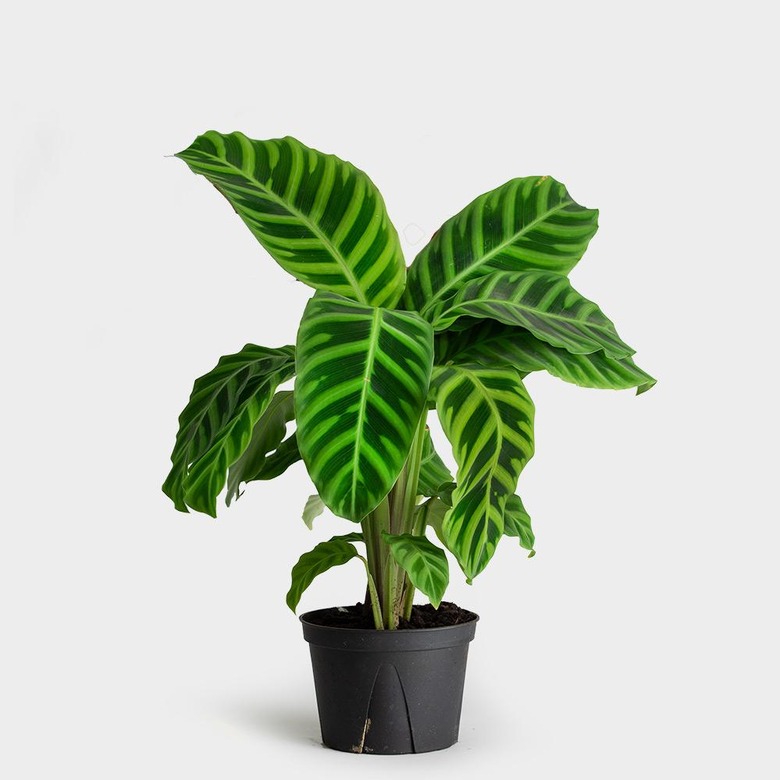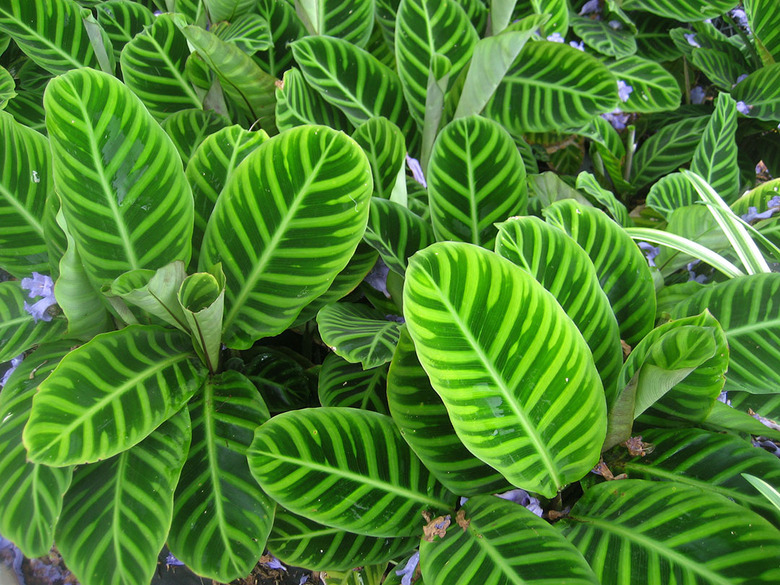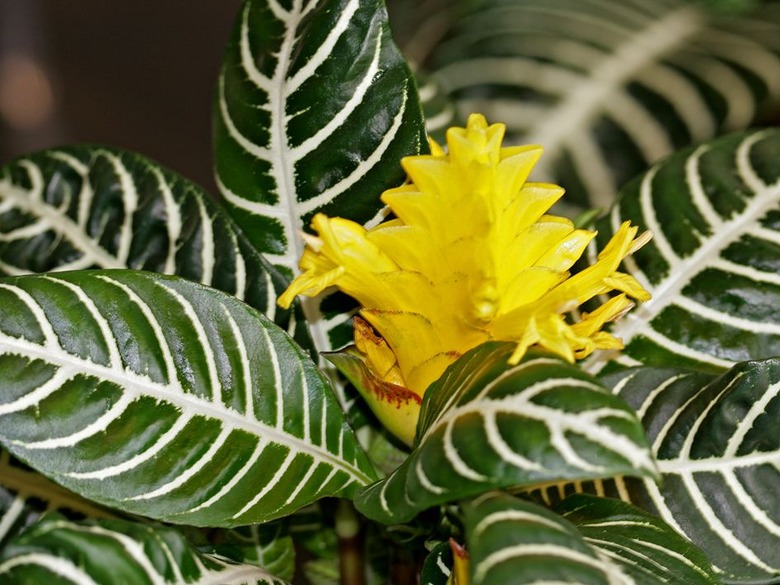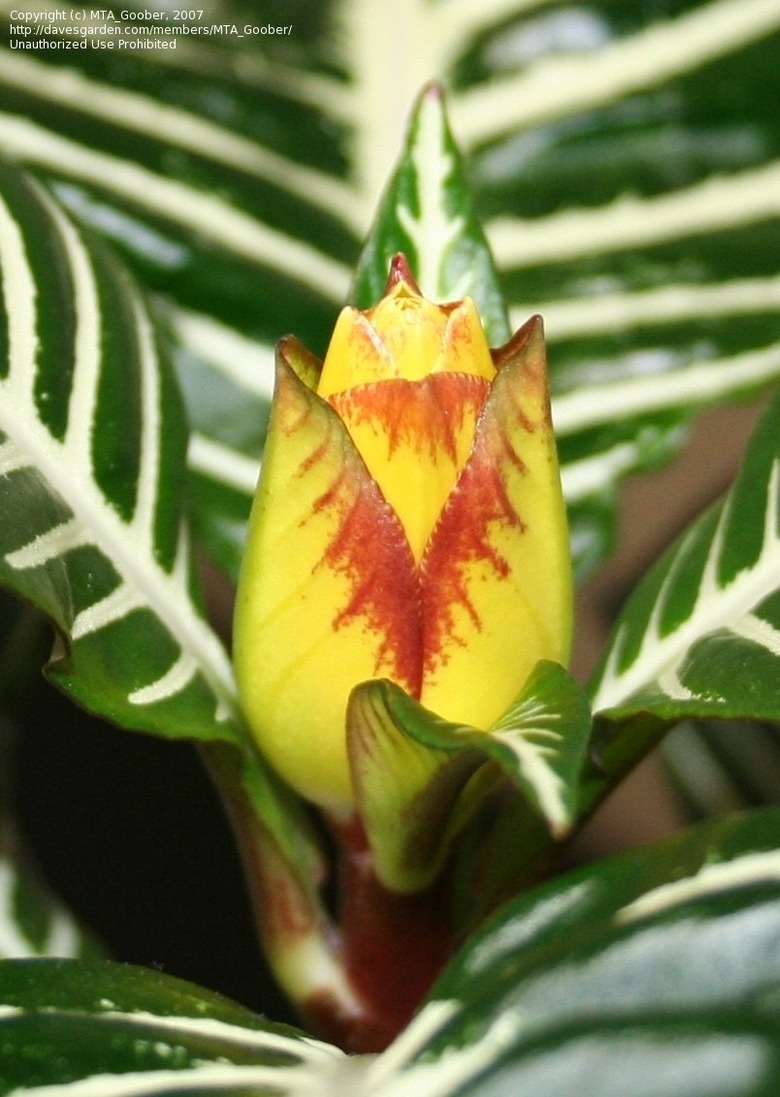How To Care For Zebra Plants
Zebra plant is the common name for two popular varieties of tropical houseplants. Both types come from Brazil and have similar care needs, and both have large striped leaves that lend the plants their common name. But a quick glance will quickly tell which zebra plant is which: Calathea zebrina has light green leaves with dark green striping and no noticeable flowers. Aphelandra squarrosa has dark green leaves with silvery white striping and, in late summer to fall, a bright yellow flower (technically a bract).
Zebra plants can survive outdoors only in USDA plant hardiness zones 11 and 12, so most people grow them indoors. They thrive in normal indoor temperatures and prefer bright light but not direct sunlight. As tropical plants, they need humidity and are somewhat finicky about watering, but overall, zebra plants are good options for bringing a touch of the tropics to a home.
“Flowerless” Zebra Plant Characteristics
"Flowerless" Zebra Plant Characteristics
Calathea zebrina actually has flowers, but they are small and usually appear under the leaves so you don't notice them. In fact, it's common (and perfectly fine) to pinch off the flowers so they don't sap energy from the plant's foliage. The foliage is the only reason to grow these large plants. Like the animal zebra (it is black with white stripes, or vice versa?), it's hard to tell whether the leaves are dark green or light green, but the light green veins seem to indicate that the dark green is what forms the striping. (For the record, zebras technically are black with white stripes.) The leaves also have a light fuzz on the top surface.
Another distinguishing characteristic of Calathea zebrina is its size. With the right conditions, it can grow up to 3 feet tall and just as wide.
“Flowering” Zebra Plant Characteristics
"Flowering" Zebra Plant Characteristics
The brilliant yellow flower of Aphelandra squarrosa is actually a bract, a leafy structure below the flower. A flower stem forms on the plant, typically in summer. The flower itself falls off within days, but the large bract shows its colors for up to six weeks. When Aphelandra squarrosa is not in bloom, its shiny green leaves with striking white veins take center stage.
This zebra plant is the smaller of the two, staying at about 1 to 2 feet in height and about 12 inches wide.
Caring for Zebra Plants
Caring for Zebra Plants
Calathea zebrina and Aphelandra squarrosa are very similar in terms of care. If something isn't right, leaves will let you know, turning brown at the edges, curling or even falling off. Both plants are semi-dormant in winter, when they require less water and no feeding, although temperatures should remain in a comfortable range all year. In nature, they grow under the cover of the tropical canopy, where they're protected from harsh sunlight and high temperatures, and their soil is typically moist.
- Light: Bright rooms with little or no direct sunlight are best. Zebra plants love greenhouses and conservatories for their bright, indirect light. They can tolerate some morning and late-afternoon light but should be kept out of hot midday sun.
- Temperature: Ideal temperatures for zebra plants are between 68 and 75 degrees F. They do okay in 60 F temperatures at night but will suffer in 55 F or below. Keep them away from heating vents to prevent overheating and drying.
- Soil: Zebra plants like rich, well-drained soil that holds moisture. The simplest option is to use an African violet potting mix, or you can make your own blend of one part garden soil, one part sand or perlite, and two parts peat moss or coir.
- Watering: Water zebra plants regularly and thoroughly during the growing seasons to keep the soil moist but not wet. How often to water depends largely on the soil and the humidity in your house. During the winter, let the surface of the soil dry before watering; think barely moist. Drooping or dropping leaves usually indicates over-watering; curling, rippling or browning are signs of under-watering or overly dry air.
- Humidity: Zebra plants do best in 60 to 70 percent humidity—more than most people want in their homes. If the air is dry, you can mist the leaves periodically, but try not to let water pool on them. You can also place the plant's pot on a layer of pebbles in a large container or tray and add water to the container—the water should not contact the pot. The water humidifies the air around the plant as it evaporates. Another option is to keep the plant in a humid environment, such as a bathroom with a lot of natural light.
- Feeding: Both types of zebra plants benefit from regular fertilizer applications during the growing season, roughly April through October. Feed them a balanced liquid fertilizer every two to four weeks during this period. Do not fertilize in winter.
Getting Zebra Plants to Bloom
Getting Zebra Plants to Bloom
Aphelandra squarrosa typically blooms once a year, usually in summer, or about three months after the beginning of spring. If you buy a plant in winter with a bloom, it was probably forced to flower, so don't expect the same cycle at home.
To make the most of your zebra plant's bloom—and give it the best chance of blooming; it doesn't always happen—keep the plant a little colder for a couple of months in winter. When new growth begins to appear in spring, move the plant into the brightest light possible (but again, not in direct sunlight) and feed it regularly. The bloom is encouraged by intense light rather than the number of daylight hours.
As the colorful bract matures, remove its dead leaves. When it has finished flowering, cut back the bract to encourage the next bloom. Under ideal conditions, it's possible to get a second bloom in fall, but this is difficult to achieve.



